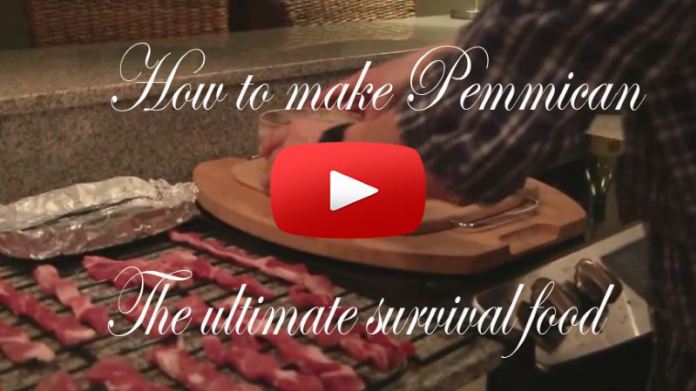by Amy S.

I am one–hundred percent convinced that a dramatic and negative change in our economy will happen very soon. Quantitative easing, over-inflated home and student loans, and a stock market built on nothing but hopes and dreams are certain to bring a collapse of the U.S. economy.
We’ve watched inflation continue to climb, seen the stock market repeatedly crash, and stood by as the housing bubble decimated our economy. Those in government and other positions of power made the decisions that led to these problems, and they continue to do so, bringing us closer to economic collapse every day.
Bankers, stock brokers, and other financial types won’t be of much use when our economy collapses. Sales people, especially those who market luxuries, won’t have many opportunities when prospects don’t even have enough money to put food on the table. And employees in industries that depend on discretionary income, such as restaurants, spas, and gyms will suffer massive layoffs as people tighten their belts.
The only way to survive an economic collapse is to prepare beforehand with a plan consisting of two simultaneous phases.
Phase one is to stock up on barter items, weapons to defend your family, and a supply of food, water and medical supplies.
Phase two is to develop skills that others need that will allow you to support your own family, such as:
Construction.
Engine repair. (Automotive and/or small engines used in power tools like chainsaws.)
Traditional or folk medicine.
Hunting and/or fishing.
Raising food sources. (Gardening, livestock, bee keeping, etc.)
Welding.
Self-defense, security, or combat skills.
Sewing and/or shoe repair.
Soap making.
There are literally hundreds, maybe even thousands of options. Most are not glamorous, but all are necessary. You just have to think about what will be needed when the economic system we’re accustomed to falls apart. Think about the skills and knowledge that your grandparents, great grandparents, or even people in today’s poor countries need to survive. You will need to acquire the same skills and knowledge to survive and economic collapse.
The value of the U.S. Dollar is falling faster than Felix Baumgartner; you can see clear proof of this in, among other things, the price of gold. While gold prices had remained fairly steady for more than 200 years, they’ve been climbing much more rapidly since the mid-70s, and in 2010, they shot through the roof. In 1950, you could have bought an ounce of gold for a mere $40; today, that same ounce of gold would cost a staggaring $1,734. It’s not that that value of gold rose; it’s simply that the value of the dollar dropped. Dramatically.
A time will soon come when our paper money becomes useless for commerce. When that day arrives, you damn sure had better have something people want, or you may be forced to resort to unsavory means to provide for our family.
I’m not going to suggest stocking up on gold; that ship has sailed, and financially, it’s probably out of reach for most people anyway. No, today, we’re going to talk about a few everyday items that are cheap and abundant today, but won’t be in the near future. These are items you’ll be able to barter for all sorts of goodies you may want when the proverbial SHTF.

Alcohol
With a virtually unlimited shelf life and widespread demand, this is an easy choice. While any type of alcohol will be valuable to others, liquor, will give you the most bang for your buck because of its many uses. Of course, there is the obvious; getting drunk to temporarily forget about the shitty condition of our once great nation, but it also makes a great, albeit painful, antiseptic, cleaning agent, antifreeze for your car, cooking or heating fuel, a solution for mixing medicines, and even as a topical solution to cool fever patients.
Coffee
Does it seem absolutely ridiculous that we used to spend about 15 cents for a cup of coffee, but today, no one feels stupid about standing in line for 10 minutes to buy a $5 cup of coffee? How would you like to be the only person in town with enough extra coffee use it for barter?
Ammunition
Do the math; with a little over half a million police in America, and over 360 million citizens, most of us will be on our own when it comes to defending our families. This doesn’t even take into account the number of police who will, understandably, leave their post to protect their own family if anarchy sweeps the country. You can’t go wrong when it comes to stockpiling ammunition; you can obviously use it for self-defense, but it makes one hell of a valuable resource to people who haven’t prepared.
DIY resources
When the economy breaks down, the ability to replace things that break down will be greatly diminished. This is where resources that enable people to do so will come in handy. Hand tools, duct tape, glue, string, screws, and such; basically anything you might need to fix something.
Your freeze-dried food is labeled as having up to a 25 year shelf life. What factors affect that?
This depends upon where you live. Wise products are made of both freeze-dried and dehydrated components and are affected by temperature, moisture, oxygen and light. Optimal storage conditions for our foods are in cool, dry places. Studies have proven that freeze-dried and dehydrated foods will last up to 25 years or even longer. For optimal storage life it is suggested that food be stored in a cool, dry place, such as a basement, with room temperatures of 50 to 55 degrees. Many of our customers store their food at room temperature and have not had issues with the shelf life. The most important thing for the food is that you keep it away from extreme heat and/or direct sunlight. Storing your food in an attic, hot shed, or any other high temperature outdoor location will significantly reduce the shelf life.
Is the food still unsafe to eat after that?
If stored as we suggest, the food should still be safe and full of flavor even after 25 years, but it may lose some flavor and texture.
Some of your products have shorter shelf life—why is that?
Moisture is one of the key components that will reduce the shelf life of freeze-dried or dehydrated foods. For our packaging here at Wise Company, we use an ultra-high barrier film developed by ExxonMobil called Metallyte™. This essentially is a flexible metal pouch that is designed to allow little to no oxygen or moisture to penetrate. This packaging is a critical component in maintaining our ultra-low moisture levels (0.032 oz./pouch). This is below U.S. military standards and well within the range necessary to achieve a 25 year shelf life. I have also included a link below that shows the results, from a third party company, of the moisture levels within our packaging.
You recently added gluten-free options to your product line. Is there a lot of demand for that?
Yes, we realized the demand! Aside from meats and veggies, Wise Food carries a unique, gluten-free, 84-serving entrée and breakfast package that can provide a single individual with three servings of gluten-free food a day. The package includes meals such as loaded baked potato casserole, tomato basil soup, potatoes and chicken-flavored potpie, teriyaki and rice, and more. Much like our other emergency food storage packages, this particular one can last for up to 25 years when stored properly. Being prepared for the unexpected is important. As long as you do your part to plan in advance, you don’t have to compromise your dietary needs even during an emergency event or natural disaster.
How do freeze-dried foods compare to other options, such as MREs, canned goods, or dry goods?
Much easier to prepare, store and move or grab and go when needed. Tastier than an MRE. No need to open up a bunch of items to prepare a meal, just open up a pouch, add water and wait and then you’re good to go.
What advice do you have for someone just starting to build their emergency food supply?
Do something now to get started even if it is small. Once you start and get the feeling of what it’s like being somewhat prepared, that will motivate you to keep going. Getting just a 72 hour supply of food and water for everyone in your family is a great place to start and won’t break the bank.
Survival books
The vast majority of people will have made no preparations before things begin to fall apart. We see this every time a hurricane is headed for landfall and within hours, grocery store shelves are stripped bare. One can acquire necessities in most scenarios, whether through barter, manipulation, or by force, however, one cannot simply acquire the knowledge needed for long-term survival. Short of joining forces with someone who already has the knowledge, a person has two options; learn by trial and error (a steep and deadly learning curve), or crack open a book. I recommend having a few extra copies of: How to Survive the End of the World as We Know It, Emergency Food Storage & Survival Handbook, and Primitive Skills and Crafts on hand.